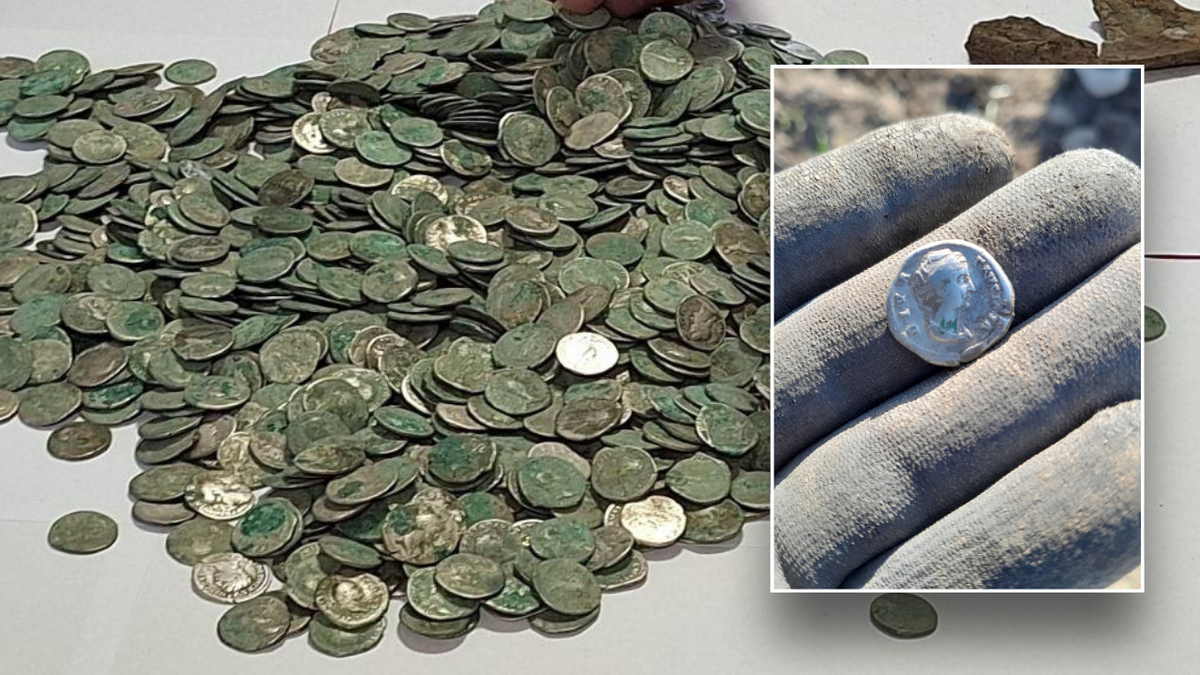The Nebra sky disc (German: Himmelsscheibe von Nebra) is a bronze disc of around 30 cm (12 in) diameter and a weight of 2.2 kg (4.9 lb), having a blue-green patina and inlaid with gold symbols. These symbols are interpreted generally as the Sun or full moon, a lunar crescent, and stars (including a cluster of seven stars interpreted as the Pleiades). Two golden arcs along the sides, interpreted to mark the angle between the solstices, were added later. A final addition was another arc at the bottom with internal parallel lines (of uncertain meaning, variously interpreted as a solar barge with numerous oars, the Milky Way.
The disc has been attributed to a site in present-day Germany near Nebra, Saxony-Anhalt, and was originally dated by archaeologists to c. 1600 BC, based on the provenance provided by the looters who found it. Researchers initially suggested the disc is an artefact from the Bronze Age Unetice culture, although a later dating to the Iron Age has also been proposed.
If its Bronze Age dating is accurate, the Nebra sky disc features the oldest concrete depiction of the cosmos yet known from anywhere in the world. In June 2013, it was included in the UNESCO Memory of the World Register and termed "one of the most important archaeological finds of the twentieth century." If, however, the Iron Age dating is sustained, "that title could go to a star clock in a grave's wall painting found in Thebes, Egypt", which is dated to 1463 BC.
Replica of the find situation of the Nebra Sky Disc for the German exhibition Der geschmiedete Himmel (German "The forged sky").
Dating
The precise dating of the Nebra sky disc depended upon the dating of a number of Bronze Age weapons, which were offered for sale with the disc and said to be from the same site. These axes and swords can be dated typologically to the mid-second millennium BC. Radiocarbon dating of a birchbark particle found on one of the swords to between 1600 and 1560 BC confirmed this estimate. This corresponds to the date of burial, at which time the disc had likely been in existence for several generations.
The swords found with the disc.
However, research published in 2020 by archaeologists from Goethe University Frankfurt and Ludwig Maximilian University of Munich casts doubt on this dating. After reevaluating prior research and the circumstances of the disc's discovery, the authors argue that the disc was likely not part of the cache of Bronze Age weapons, and therefore, cannot be dated with these artefacts. Instead they assert that the disc should be evaluated as an individual find. The authors contend it bears hallmarks of an Iron Age item, and they place its origins instead in the first millennium BC. This younger age, they argue, would significantly change the sometimes far-reaching cultural and historical conclusions that have been attributed to the disc.
Other associated finds: chisel, axeheads, bracelets.
Origin of the metals
According to an initial analysis of trace elements by x-ray fluorescence by E. Pernicka, then at the University of Freiberg, the copper originated at Bischofshofen in Austria, whilst the gold was thought to be from the Carpathian Mountains. A more recent analysis found that the gold used in the first development phase was from the River Carnon in Cornwall, United Kingdom. The tin present in the bronze was also of Cornish origin.










